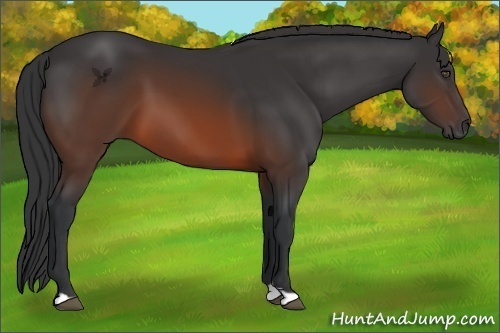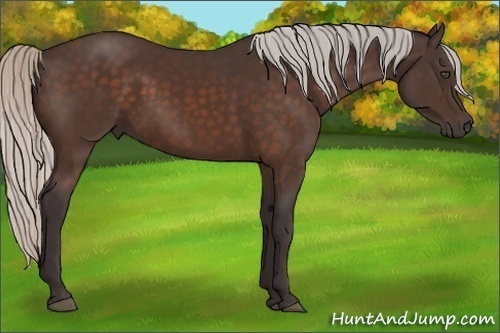X
HGG Community Forums
Log In to HorseGeneticsGame
HGG Community Forums
Join our discord server!
Howdy, Stranger!
It looks like you're new here. If you want to get involved, click one of these buttons!
Categories
- All Discussions61,360
- Announcements1,188
- HAJ Discussion59,017
- ↳ New Member Introductions68
- ↳ Help Me Out5,084
- ↳ Horses for Sale and Auction14,457
- ↳ Breeding Ads and Sales6,078
- ↳ Herd Helpers22,965
- ↳ Bug Discussion5
- Non HAJ Discussion1,155
- ↳ Saddle Sisterhood113
- ↳ Games, Contests and GiveAWays348
- ↳ Genetics305
In this Discussion
- Ammit March 2016
- calamitycowgirl March 2016
- Elfin March 2016
- fantasyfarms August 2016
- Forestshadow March 2016
- Fox Meadow January 2017
- HilltopAcres2 July 2017
- ichigo March 2016
- PaintedPonies October 2016
- SandyCreekAcres July 2017
- willowtree September 2017
Who's Online (3)
- annismyrph 3:41PM
- Cavalynn 3:40PM
- Fiddler 3:41PM
Questions about color changes
-
Hey all! As I said in my thread on the intro board, I played very actively quite a while ago but haven't been back in a few years. I'm really excited about all of the color changes and additions, but I have several questions!
1. What's the difference between At and A+?
2. What's the scoop on splash 2? I think I remember this being added right about when I left.
3. Explain brown? When I left it was just a StySty bay but I know that's changed.
4. Has appaloosa changed at all?
5. What genes are lethal in combination? I think the list has grown since I've been away.
Thanks so much! I'm trying to decide what color I want to breed for, and I'm thinking something with splash and S+ but I've gotta make sure I know all the options! -
6. Also, what makes this horse appear so red even though it's a buckskin?
http://www.huntandjump.com/horse.php?horseid=3883228
-
1. A+ = wild bay
my wild bay
At = brown gene
my brown horses
2. Splash 2 is homozygous leathal also leathal with splash 3
3. At
4. Appaloosa has changed a lot looks wise. Varnish is no longer part of the color test and their spots are dynamic so horses look even more different from each other than ever. Also snowflake is a LE gene that was just on sale until the other day.
5. There is a picture on the facebook group in the files hopefully someone can link to for you, but I don't think it's changed too much.
6. Haha that's my boy. He's a darker "brown" than the pale buckskins because he has 2 Sty genes. Other than that maybe he has some bronzing? Not 100% sure.Post edited by calamitycowgirl at 2016-03-18 08:54:46 -
1. This ties in with your third question, At is the new brown, a horse that is Ata E? Sty? will express as brown, it can still show on some horses as well, and will show when AtAt. An AtA horse will express as bay.
A+ is the wild gene and will create a wild bay/buttermilk buckskin with one copy plus E.
2. Splash 2 is one of the 3 splash genes in game, it is homozygous lethal and lethal with Splash 3 (Splash 3 is LE)
3. See above :D
4. Yes, not too well versed in it yet but the LP gene is still leopard and will cause the spots, the ECA3P is like the pattern gene, and Ammit will yell at me for referring to it like that, but more of the ECA3P the bigger the blanket. LPLP is snowcap as it was years ago. It's fun to experiment with, as the appaloosa patterns are now totally dynamic and none are the same, spot and blanket size is inheritable, it's awesome!
5. Like I said in 2, Splash2 is homozygous lethal and lethal with 3. All whites are lethal together as they had been, Sb3 plays nice with everything but Sb1 and 2 are lethal with white 1 and 2. There's a nifty document on the facebook page with all of the lethal combos!
6. That's another cool aspect of the new appy, bronzing, which I haven't figured out yet, but it really distorts base colors and causes dark spots -
Wild bay is basically a bay with minimal black points.
-
OH and DP is new, it's a non-testable gene that causes red based horses to show darker. Chestnuts with DP may show as Liver chestnut. A chestnut horse that is DPdp StySty will express as liver, and a DPDP StySty will express as liver and look black (DPDP and Sty? will show as liver too)
-
It causes all red pigment to be darker. :)Need to contact me? Read this first.
I sometimes get busy and miss things. If your private message, question, etc. gets missed please ping me so I can follow up with you. I am also always happy to explain or clarify. (HAJ does not have a customer service email, please send me a forum message! )
she/her
-
The changes/additions to the agouti gene are pretty complex. Here's a complete run down;
A+: Wild Bay, is the most dominant allele and will override all of the other three alleles. It's most observable sign at the moment is a lightening of the legs. They appear more grayish than black and the gray is patchy rather than solid.
A: normal dominant Agouti, which creates the standard Bay with strongly black points.
At: Brown, is recessive to Wild Bay and normal Bay, and so does not show in combination with these alleles. Homozygous AtAt horses will be lighter than Ata horses. When paired with the recessive agouti, a, it darkens the coat significantly, especially on the neck, which will appear solidly darker brown.
a: the recessive allele which has no effect on black pigment at all.
-
I know I am late but I wanted to leave an example of bay

eE Aa CC dd gg ff SstySsty pp Zz WF: Minimal
Both parents are hz for DP so this is a silver bay, if he were an app he would also be a snowflake which would then be this:
both are from the same parents -
Beautiful horse fantasy
-
How can you tell if a horse is het or homo for DP genes?
-
If it is a chestnut and has SstySsty and is at least DPdp, or SstyS and DPDP, it will color test as Liver chestnut. If it has two copies of both these darkening alleles a chestnut horse will still be called a Liver Chestnut, but it will appear black.
Palominos with similar sets of darkening genes will be called Chocolate Palominos. When they have four copies of darkening genes, they will be quite dark, but not black.
Any horse can carry DP, but it will not affect black horses since it only influences red pigment, which black horses don't have. With experience you can learn to recognize it in Champagnes, Bays, and Bay Duns. Red duns with at least 3 darkening copies will test as Liver Red Duns.
For lined horses, the same testing results will be returned under similar circumstances for Chestnuts, Palominos and Red Duns. Otherwise you will have to depend on appearance and knowing the genesets of the parents.
If a horse is homozygous for DP, all its foals will be at least heterozygous for DP, even if they don't have two Ssty alleles to make them liver. If both parents are homozygous for DP then the foal will definitely be homozygous for DP. If one parent is homozygous DP and the other is heterozgous DP, the foal has a 50/50 chance of inheriting DP from the heterozygous parent. If both parents are heterozygous DP, the foal has a 25% chance of being homozygous DP, a 50 % chance of being heterozygous DP and a 25% chance of being dpdp. Thanked by 1Ammit
Thanked by 1Ammit -
Thank you!
-
So does this horse have any DP?
http://www.huntandjump.com/horse.php?horseid=4766232 -
It is at least heterozygous DP because it is built on the Dark Chocolate herd helper, which produces chocolate palominos. I think, if it were homozygous DP, it would be even darker, but having homozygous brown, on top of Cream, it's hard to tell. There are at least 3 darkening genes working to compete with the diluting effect of Cream, and the darkening effect of brown is diluted by being AtAt, instead of just Ata. So much is going on, I have a hard time predicting whether there might be a second DP involved. However, most of the Chocolate Palominos I've seen made from the Dark Chocolate Rank Special appeared to be SstySsty DPdp.

-
Wow SandyCreekAcres! Thank you for your detailed explanations and answers. This helped shed alot of light on genetics for me!Thanked by 1SandyCreekAcres
-
Thanks, HilltopAcres. I believe that the more thorough an answer is, the better people will understand things, so I tend to make fairly long explanatory posts. I'm glad to know that you find this long-winded habit of mine helpful. :DPost edited by SandyCreekAcres at 2017-07-13 05:18:12
 Thanked by 1PaintedPonies
Thanked by 1PaintedPonies



















